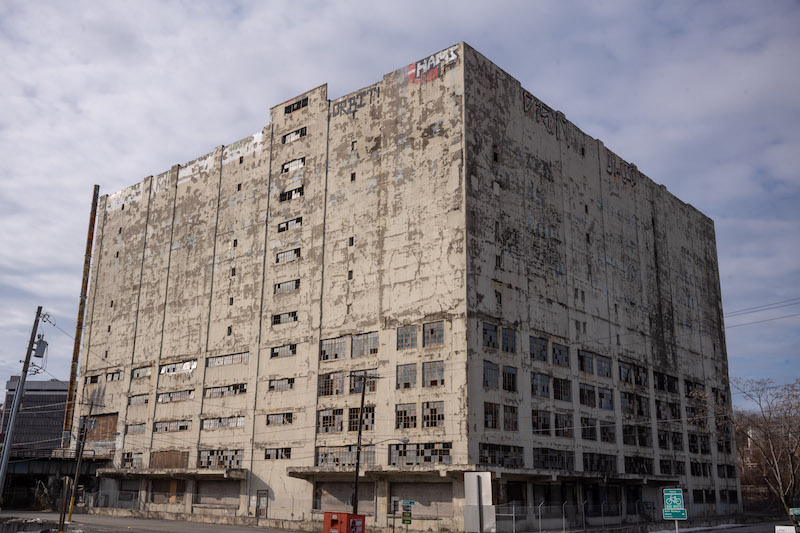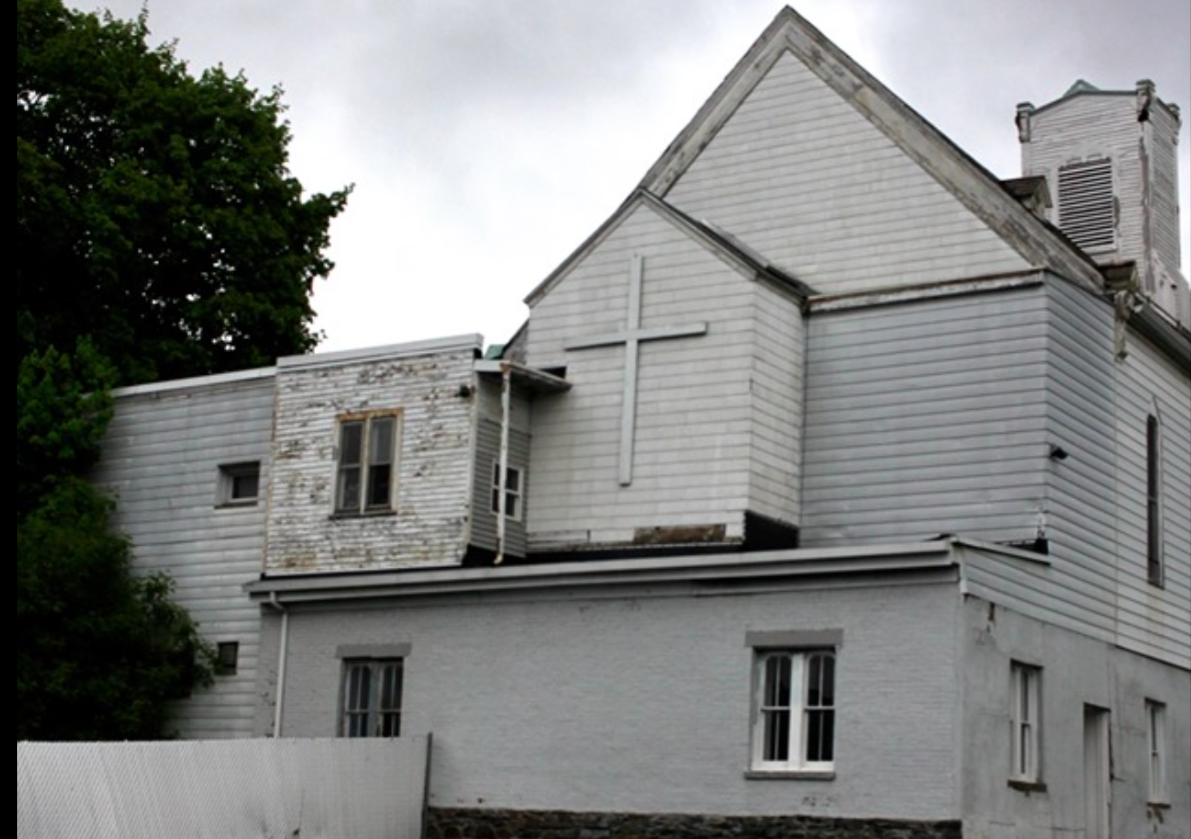If you’re headed southbound into Albany on Interstate 787, approaching Exit 4B, the thought is almost unavoidable, whether it’s your first visit or regular commute: Someone should do something with that building.
Built almost a century ago, the Central Warehouse — that big, blotchy, concrete cube — hasn’t served a sanctioned purpose for decades. It’s unclear when it might again.
Owner Evan Blum, who purchased the former cold-storage facility from a credit union in 2017, said in a phone interview with The Collaborative in early December that he intends to occupy part of the half-million-square-foot space with his Harlem-based architectural salvage business.
Blum has other plans for the structure that he’s not ready to publicize, though he did mention its eventual facade will be “very colorful.” He has begun collecting materials to use for the project, he says, including elevator equipment and vintage lighting fixtures.

As for code violations pending around the time we spoke and hundreds of thousands of dollars in taxes owed on the property, which he owns through an entity named The Phoenix of Albany, LLC, Blum says he has abated the building’s most pressing issues and will pay taxes “when I get things started.”
“I’m determined not to fail,” he says.
The enduringly ugly structure’s prominence in the I-787 viewshed effectively guarantees that a few phone calls and emails, plus some light Googling, will turn up a bevy of ideas for the site.
Tony Iadicicco, executive director of the Albany Center Gallery, imagines painting the warehouse’s exterior to resemble a Rubik’s Cube. Putting a literal puzzle on a problematic building long in need of a solution seems sort of fitting, he offers.

Iadicicco is not a cube aficionado himself — painting the puzzle might be easier than decoding it, he says — but he does have relevant experience with large-scale works. For the past three years, he has served as curator for Capital Walls, a collaborative project between Albany Center Gallery, Albany Barn and the Albany Parking Authority that has enabled artists to paint murals on garages and highway ramps. (The puzzle concept is a personal idea and not connected with that effort, he says.)
The building has “endless amounts of potential,” Iadicicco says. “It’s just trying to figure out if it’s possible — and then from there, figuring out all the details.”
Suzanne Spellen, a Troy-based writer and architectural historian, suggests converting the warehouse to “housing and/or workspace with a gallery/retail component on the first floor” — that’s “assuming money is no object,” of course, “because it will cost buckets of money to do just about anything.”
Buildings like the Central Warehouse “aren’t easy to work with because of the structural elements, as well as the thickness of the walls (a necessity for cold storage) and the obvious lack of windows,” she wrote in an email.
The environmental remediation necessary for the warehouse’s redevelopment might be a challenge, according to architect Adam Petela, who owns Local Design Studio in Troy. “Perhaps the solution would be to execute a project that limits the scope of required work to only the most necessary and interesting areas of the building, such as the first and second floor, the (likely) large elevator shafts, and the top floor,” he told The Collaborative.
The building looms large in renderings of the Albany Skyway — the linear park planned for what is now an underutilized off-ramp that links Corning Riverfront Park to Clinton Avenue — which might present programmatic opportunities. Petela suggests the warehouse could be “used as a canvas for building projection pieces or even movie showings” to be enjoyed by people on the Skyway.

The sport of dreaming up possible uses for the concrete eyesore is not new. “I’ve always thought someone should set up scaffolding for a week and let the people of Albany decorate the building however we see fit,” one commenter wrote in response to an All Over Albany post in 2009. “Rinse and repeat every few years to keep things interesting.”
The following year, a Times Union blog post asked what should become of the building. “There is only one highest and best use for this property,” one reader replied. “Fill it with dirt and put a giant flowering tree in it.”
The warehouse presently serves as “a very huge example of vacancy in the city,” one “that we would love to see reused,” says Pam Howard, executive director of the nonprofit Historic Albany Foundation, which advocates for the preservation of endangered buildings throughout the capital.
“I’m glad no one has knocked it down yet,” Jeff Buell, a principal of Redburn Development, a firm with hundreds of apartments under development in downtown Albany, wrote in an email.
“The building is an opportunity for Albany and the Capital Region,” Buell continues. “Things move slow[ly] here, and so it will too … but at the right time and right place, it’ll be something to behold.”
Supporters of the flowering tree concept might find that sentiment encouraging.
Luke Stoddard Nathan is a reporter for the Bennington Banner and Manchester Journal. He lives in Troy.






https://www.facebook.com/photo.php?fbid=10220521849973447&set=a.1185621357889&type=3&theater